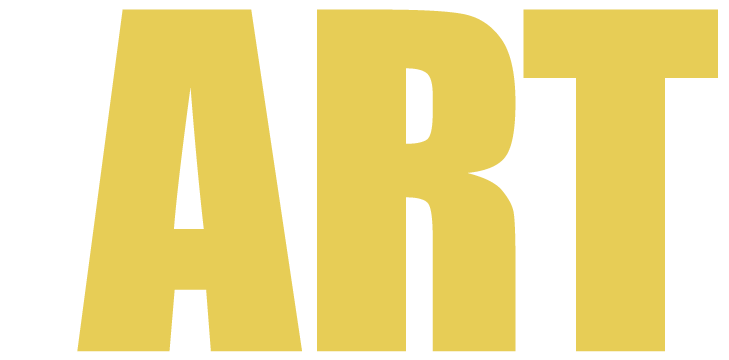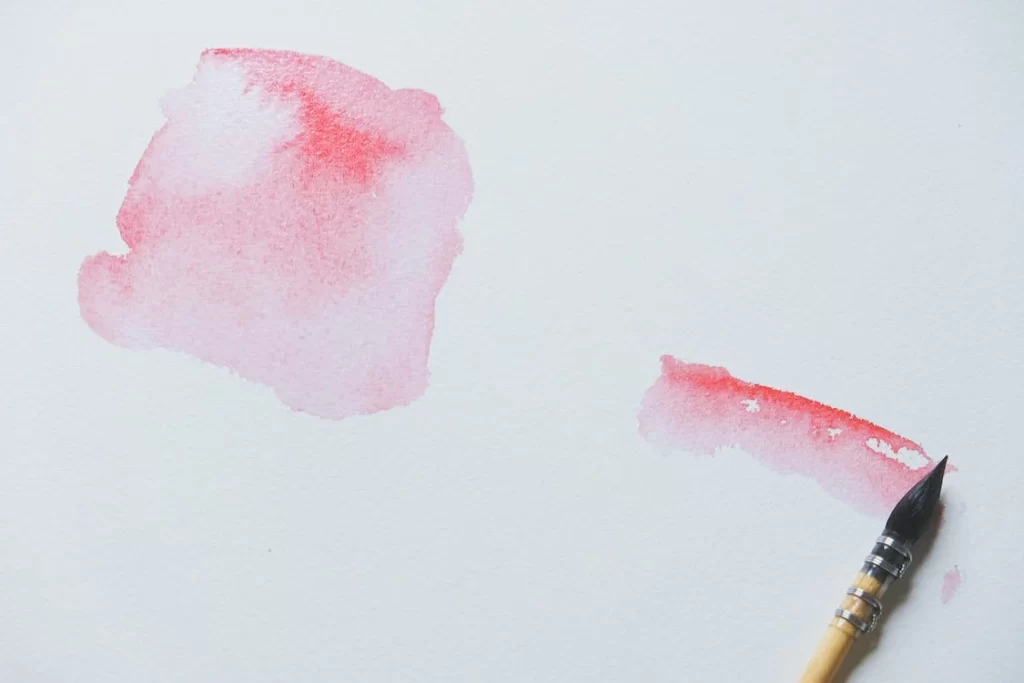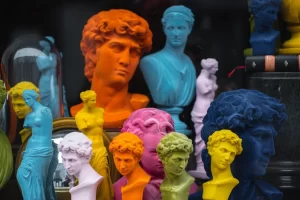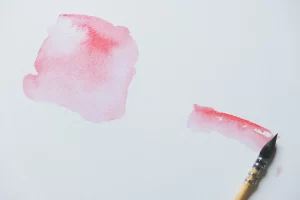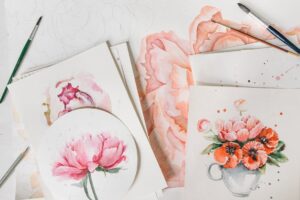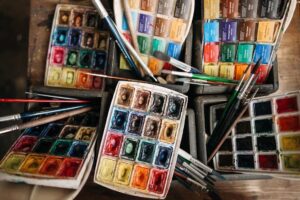Let’s begin by familiarizing ourselves with what makes a watercolor brush what it is. Knowing more about brushes and their properties will help you test out and discover new brushes on your own and know whether or not you are getting a quality product. The best watercolor brushes makes up a large list because there are many quality products out there. It’s ultimately up to you and your knowledge to find the best watercolor brushes for your needs.
Parts of A Watercolor Brush
Paint brushes are nothing too complicated. But choosing the best watercolor brushes vs a not so good one comes down to the quality of manufacturing and materials used, as well as the research the manufacturer has done to ensure the best possible results for the painter. Some of the highest quality brushes in the world are handmade using proprietary techniques passed down for centuries to a select few. Others are just some nylon hairs glued to a stick.
A brush is made up of three parts- The tuft or hair of the brush, the handle, and the ferrule which is the often metal crimp between the handle and the tuft.
The handle deals in comfort and stability, although most manufacturers have it right. The ferrule is responsible for holding the hairs in place. One of the most annoying things that can happen when you’re painting is your brush shedding hair all over the place. This is especially true with watercolors. The tuft is probably the most complex part. Watercolor brushes tend to be much softer and more absorbent than acrylic or oil brushes in order to hold more water.
These brushes are made from a wide variety of materials; many of which are covered below.
Types of Brush Materials
Brushes fall into two categories- natural and synthetic.
Natural brushes are crafted from animal hair, with sable, squirrel, hog, and goat being among the most commonly used. Sable brushes, especially those made from Kolinsky sable, are prized for their superior softness, flexibility, and ability to hold and evenly distribute water and pigment. They are renowned for their fine tip and springy quality, allowing for precise control over brushstrokes.
Squirrel hair brushes, on the other hand, are known for their impressive water retention, making them ideal for large washes. Hog and goat hair brushes offer more stiffness and are typically used for broader strokes and texture. Natural brushes are often preferred for their durability and the nuanced control they offer, though they tend to be more expensive and require careful maintenance to preserve their quality.
Synthetic brushes, made from man-made fibers like nylon or polyester, have seen significant improvements in quality and performance over the years. Initially developed as a more affordable and ethical alternative to natural brushes, modern synthetic brushes can now closely mimic the characteristics of natural hair. They are known for their durability, easy maintenance, and resistance to damage from acrylics or other harsh chemicals.
Synthetic brushes are versatile, offering a wide range of shapes and stiffness, suitable for detailed work as well as broad washes. They tend to retain their shape better over time and are less prone to breakage or shedding. For artists concerned with animal welfare or those looking for cost-effective options without compromising on quality, synthetic brushes present an appealing choice.
Ultimately, the choice between natural and synthetic watercolor brushes depends on an artist’s specific needs, technique, and values. While natural brushes offer unparalleled softness and fluidity, synthetic brushes provide a durable, ethical, and budget-friendly alternative with increasingly comparable performance.
Qualities of A Good Watercolor Brush
A good watercolor brush possesses several key qualities that contribute to its performance, durability, and versatility, enabling artists to achieve a wide range of effects and textures in their work. Here are some of the essential characteristics to look for:
- Absorbency: A quality watercolor brush should have excellent water retention capacity. This allows the brush to hold a sufficient amount of water and pigment, enabling smooth, flowing strokes without the need for frequent reapplication.
- Point and Snap: The brush should come to a fine point and maintain its shape during use, which is crucial for achieving precision in detailed work. The “snap” refers to the brush’s ability to spring back to its original shape after being bent, ensuring consistent strokes and control.
- Durability: A well-made brush will withstand repeated use and cleaning without shedding hairs or losing its shape. The ferrule (the metal part that holds the bristles) should be securely attached to the handle, and the bristles should be firmly set within the ferrule.
- Flexibility and Strength: The bristles should be flexible enough to allow for a variety of stroke widths and pressures but also have enough strength to push against the paper without splaying outwards, which helps in controlling the flow of the paint.
- Versatility: Good watercolor brushes can handle different techniques, from fine lines and detailed work to broad washes. This versatility often comes from a combination of the brush’s shape, size, and the type of bristle.
- Smoothness: The brush should glide smoothly across the paper, allowing for even application of water and color without leaving unwanted brush marks or streaks.
- Comfort: The handle should be comfortable to hold for extended periods, with a balance that feels natural in the hand, aiding in the ease of brushstrokes and reducing hand fatigue.
- Material and Construction: Whether natural or synthetic, the materials should be of high quality. Natural brushes made from sable or squirrel hair are renowned for their superior performance, while high-grade synthetic brushes offer excellent capabilities and are a more ethical and affordable option.
Watercolor Brush Shapes
As we know, brushes come in all different shapes and sizes. As a general rule, its best to start a watercolor painting with large brushes and loose washes of color and work your way to smaller and more precision tools towards the end. The shape will determine the shape of your mark or the expression it produces. Here are some of the most common watercolor brush types.
Round or Pointed Round
The shape of the brush denotes the shape of the mark it makes. In the case of the round, we get round marks which are perfect for painting subjects that have rounded edges. With rounds and pointed rounds, one can use the tip of the brush for thin strokes or press down and use the body of the brush for thick strokes.
Flat
A flat brush is great for making straight lines, geometric shapes, and covering a wide area of your painting. These are perfect for things that have rectangular shapes because the brush is rectangular. The bricks of a building or the jagged edges of a rock for example.
Cats Tongue
My personal favorite type of brush. These start out like flats at the belly and then taper to a fine point. Controlling the pressure and angle of this brush can create a great deal of varying strokes. This brush is great for things like grass or strands of hair, although in my experience, a good cats tongue is great for almost everything.
Liner
Similar to a round but longer and thinner. It doesn’t have a belly like the round brush which allows your lines to be even thickness throughout. These are often used towards the end of a painting to add fine details and long strands.
Mop
A round shaped brush with no pointed tip. Typically softer than round brushes too. The mop is great for washes of large areas and blending, but not so much for fine detail. The best time to use a mop is at the beginning of the painting when you are trying to cover the painting with your initial wash.
Best Watercolor Brushes
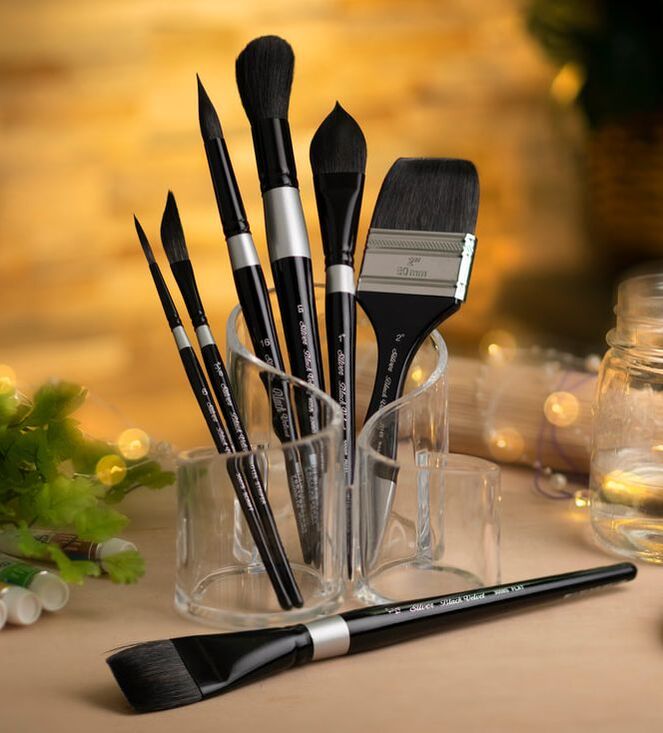
Silver Black Velvet: The Silver Black Velvet series combines natural squirrel hair with synthetic filaments, offering a blend that is both luxurious and practical. These brushes excel in water retention and smooth paint application, making them ideal for artists seeking a balance between fine detail work and broad washes. Their distinctive black handle and silver ferrule design not only look elegant but provide comfort and balance in use, making them a favorite among watercolor enthusiasts for their versatility and durability.
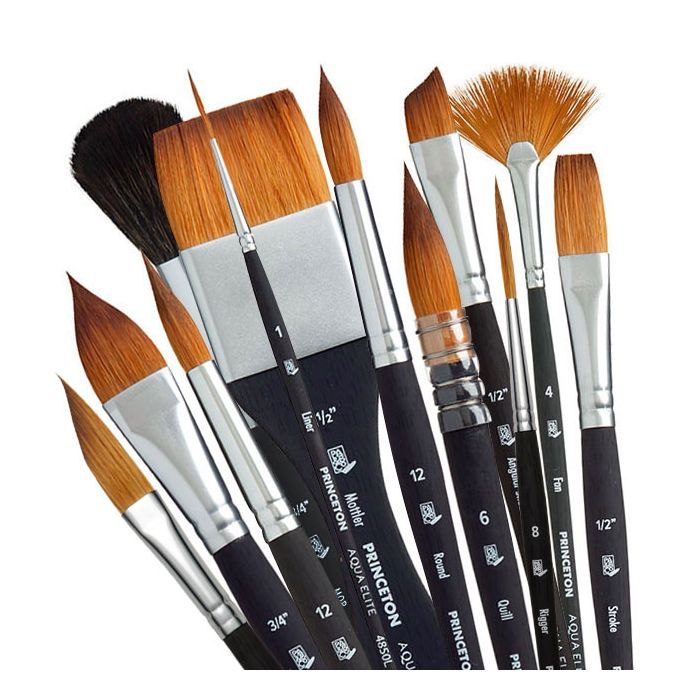

Princeton Aqua Elite: Princeton Aqua Elite brushes are a triumph of innovation, featuring synthetic Kolinsky sable hairs that mimic the qualities of natural sable without the ethical concerns. They are designed for artists who demand excellence in point and spring, along with superior water holding capacity. The Aqua Elite series stands out for its exceptional performance in precision and control, catering to both professional artists and hobbyists looking for high-quality, animal-friendly options.
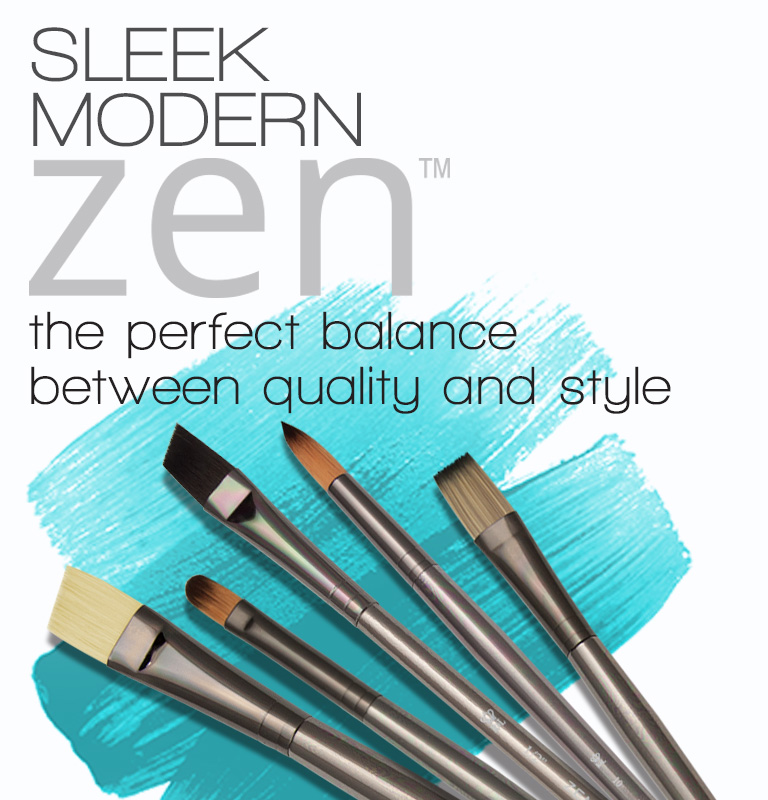

Royal and Langnickel Zen: The most affordable on the list, Royal and Langnickel Zen brushes bring a unique combination of multi-diameter synthetic bristles, ensuring smooth flow and excellent color carrying capacity. The design features a sleek silver handle and anodized aluminum ferrule, making them not only visually appealing but also robust and resistant to wear. These brushes are great for artists who appreciate a blend of affordability, durability, and versatility in their painting tools. My personal favorite is Series 83.
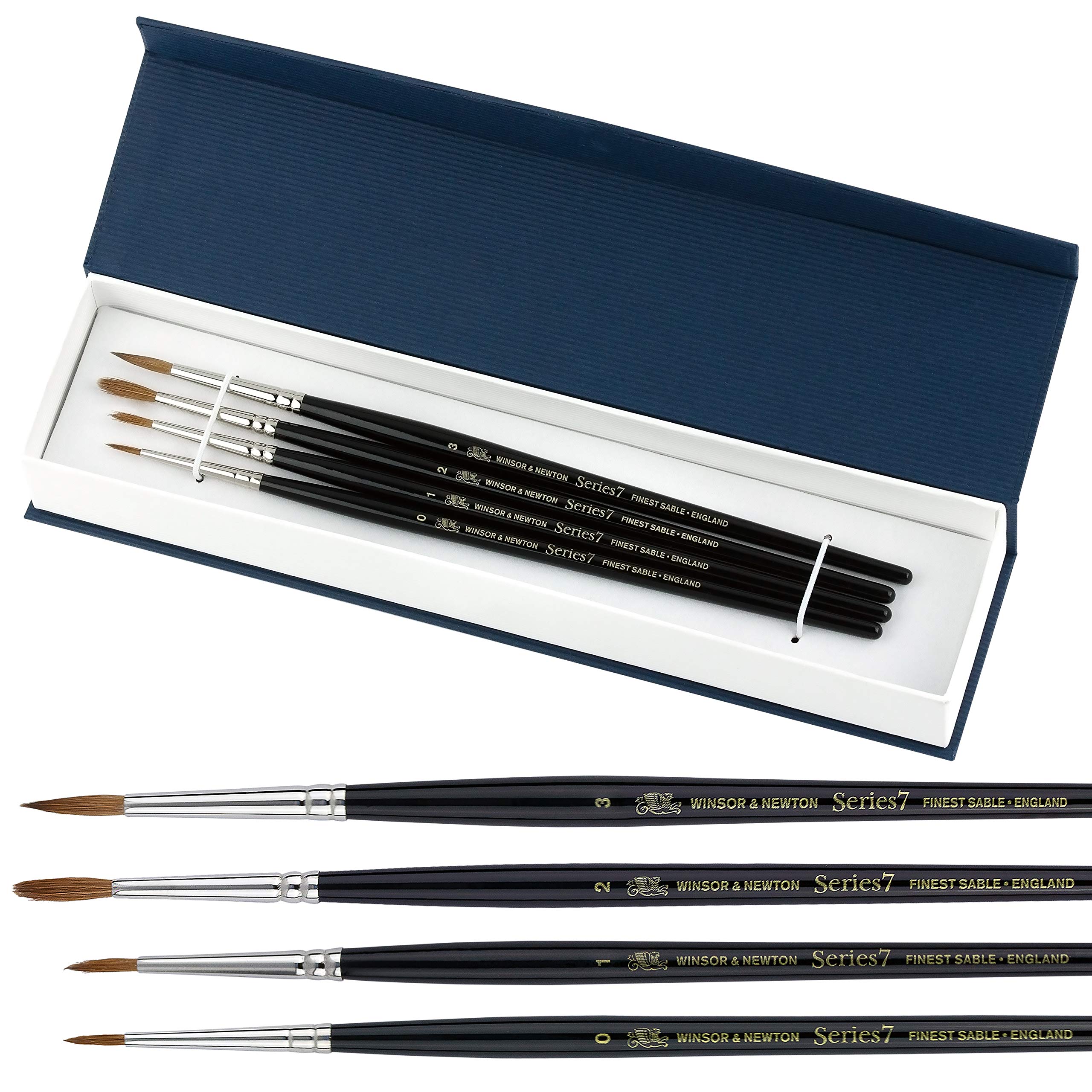

Winsor and Newton Kolinsky Sable: Winsor and Newton’s Kolinsky Sable brushes are the epitome of luxury and performance in the watercolor world. Crafted from the finest Kolinsky sable hair, these brushes offer unparalleled precision, spring, and absorbency. They are the go-to choice for professionals seeking the ultimate tool for detailed work and fine art creation. The natural characteristics of the sable hair ensure that each brush stroke delivers a smooth, even flow of paint, making these brushes highly sought after for their exceptional quality.
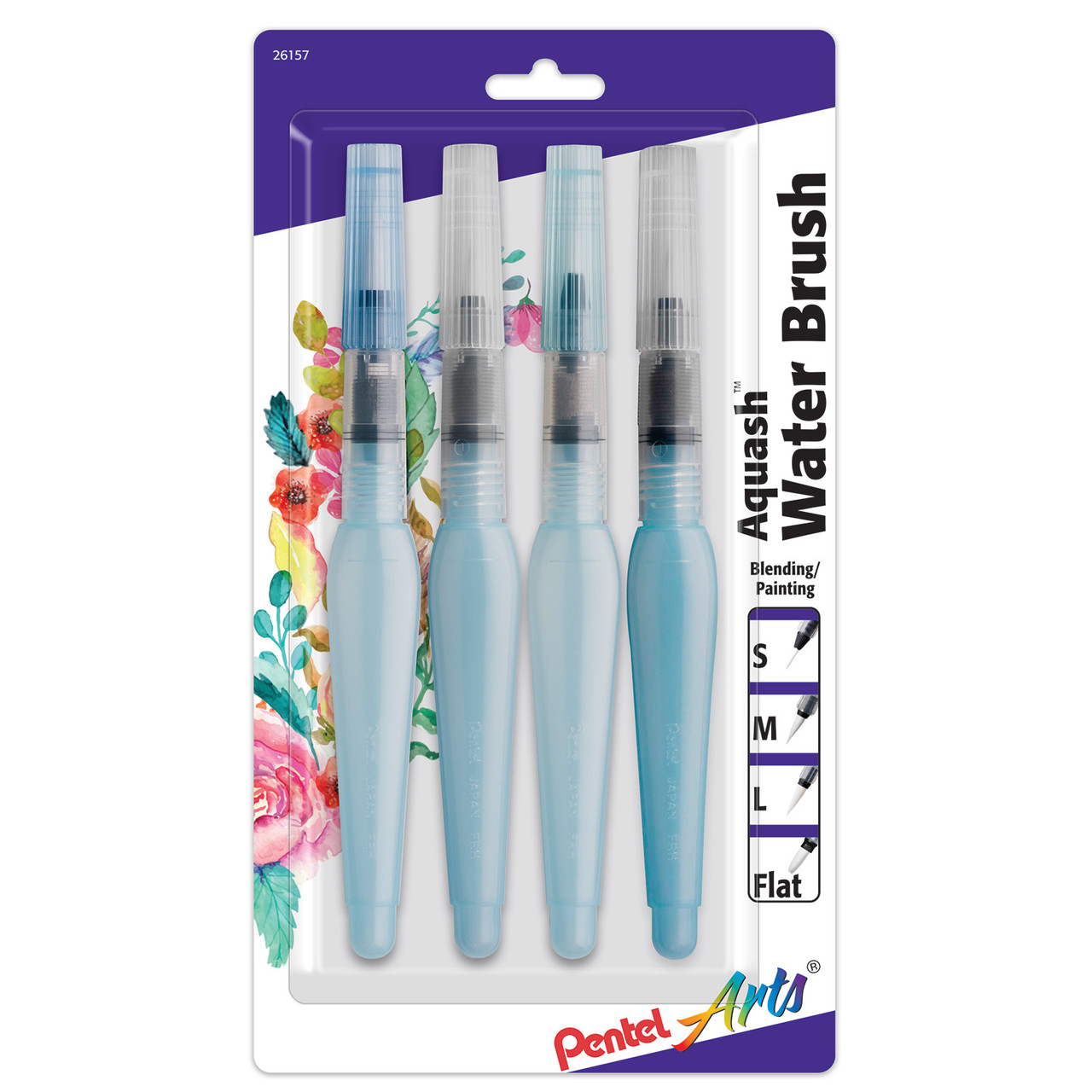

Pentel Water Brush: The Pentel Water Brush is a revolutionary tool for watercolorists who value convenience and portability. It features a refillable water reservoir in the handle, eliminating the need for a separate water container. The durable, synthetic bristles are versatile enough to create a variety of strokes, from fine lines to broad washes. Ideal for on-the-go artists, urban sketchers, and those who love to blend and create washes with ease, the Pentel Water Brush is a must-have for anyone looking to add a dynamic and practical brush to their toolkit.
Conclusion
Ultimately, the journey to finding your perfect brush is a valuable part of your growth as an artist. It encourages a deeper understanding of your materials and how they interact with your style. So, embrace the process, experiment with different brushes, and discover the tools that best bring your watercolor visions to life. Remember, in the realm of art, the right tools can make a huge difference.
If you’re still shopping for watercolor supplies and would like to see my top picks for watercolor paper or paints, check out the additional posts below.
